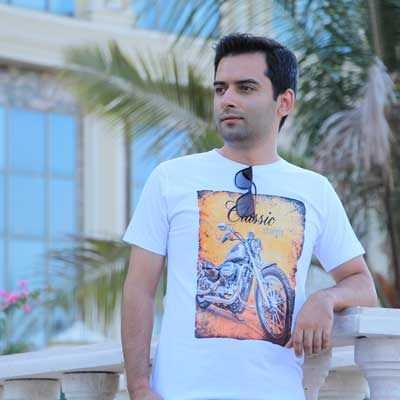Tar
The tar is a traditional Persian musical instrument with a significant place in Persian classical music. It is a string instrument with a long neck and a resonating body, typically made from mulberry wood. The tar features a fretted fingerboard, and six metal strings plucked using a plectrum. It is known for its rich and captivating sound, capable of producing both melodic and rhythmic elements.
As a Persian musical instrument, the tar carries a deep cultural heritage and is revered for its expressive capabilities. It has been a staple in Persian classical music for centuries, adding depth and soul to compositions.
If you’re interested in exploring the enchanting sounds of the tar, the Ersaly store offers a wide selection of Persian musical instruments, including the tar. With their dedication to providing authentic and high-quality instruments, Ersaly ensures that musicians and enthusiasts can find the perfect tar to enhance their musical journey.
Tar String Instrument
The tar is a stringed instrument characterized by its unique construction and captivating sound. It has a double-bowl body, long neck, and animal skin membrane, giving the instrument its distinctive timbre. The tar typically has six strings, with three courses of two strings each, tuned in various configurations depending on the musical tradition. The strings are plucked with a plectrum, allowing the musician to create intricate melodies and evocative harmonies.
Iranian Tar Instrument
The tar is a revered Iranian instrument with a long and storied history. It has been an integral part of Persian classical music for centuries, and its soulful sound and expressive capabilities have made it a favorite among musicians and listeners.
The tar’s distinct construction, featuring a double-bowl body, a long neck, and a membrane made of animal skin, contributes to its unique sonic character. In Iran, the tar remains a popular instrument in traditional and modern music settings.
Tar Musical Instrument
In the realm of world music, few instruments can capture the nuances of emotion and heritage quite like the tar. This long-necked lute, with its distinctive waist and double-bowl shape, is an emblem of musical artistry. For those looking to procure this exquisite instrument, the Ersaly website is the destination of choice. Recognized for its unrivaled quality, Ersaly offers the tar at prices that reflect both the craftsman’s skill and the musician’s budget. Each tar is more than an instrument; it’s a piece of art, echoing the meticulous attention to detail and passion for musical legacy. W
Tar Instrument History
The tar, with its silhouette as recognizable as the sound it produces, is not merely an instrument but a chronicle of history itself. Originating over centuries ago in the Persian Empire, the tar’s name, signifying ‘string’ in Persian, is a testament to its centrality in the music of the region.
Historically, the tar was the musician’s confidant, articulating through its strings the unspoken narratives of the heart. A custodian of culture, the tar has been at the crossroads of musical evolution, adapting and echoing the shifting sands of time and influence from the old Silk Road to the royal courts.
Tar Instrument Kaufen
The journey of acquiring a tar is as profound as learning to coax melodies from its strings. For those in quest of this noble instrument, the act of ‘kaufen’ — to buy — is a step into the world of tradition-infused soundscapes. In markets and online, the tar awaits, its graceful form and potent history beckoning to those who understand its worth. The process is more than a transaction; it is adopting a legacy, the anticipation of enlivening silent woods with music.
Tar Shehnai Instrument
The tar shehnai instrument is an intriguing hybrid that combines elements of the tar, a traditional Persian stringed instrument, with the shehnai, a reed instrument native to India. This unusual fusion creates a captivating sound that blends the tar’s melodic qualities with the shehnai’s expressiveness. The tar shehnai’s distinct appearance and sound make it a fascinating addition to world music instruments.
Taar Shehnai
The taar shehnai is an alternative spelling for the tar shehnai, a hybrid instrument that combines features of the tar, a traditional stringed instrument from Iran, with the shehnai, an Indian reed instrument. This unique combination creates a captivating sound that blends the tar’s melodic qualities with the shehnai’s expressiveness. The taar shehnai’s distinct appearance and sound make it a fascinating addition to world music instruments.
Tar Instrument Price
The price of a tar instrument can range widely based on factors such as craftsmanship, materials used, and the maker’s reputation. Beginner models may be more affordable, while professional-grade instruments made by renowned artisans can command higher prices. When purchasing a tar, it’s essential to consider your budget, skill level, and the instrument’s sound quality and durability. Researching and comparing different options can help you find a tar that meets your needs and preferences.
Tar Lute
The tar lute, a traditional stringed instrument from the Caucasus and Iran regions, is sometimes used to describe the tar. The tar shares some similarities with the lute family of instruments, such as its long neck and double-bowl body. However, the tar is distinct in its construction, featuring a membrane of animal skin covering the upper part of the body and its unique arrangement of six strings. The tar lute is known for its melodic sound, making it a popular instrument in various musical traditions.
Azerbaijan Tar Instrument
The Azerbaijan tar is a variant of the traditional tar instrument that holds a special place in the country’s musical heritage. This double-bowl stringed instrument features a slightly different shape and tuning compared to the Persian tar, and it plays a vital role in Azerbaijani mugham, a traditional form of music that combines improvisation and composition. The Azerbaijan tar is cherished for its expressive sound and is essential to the country’s rich cultural landscape.
FAQs:
What is a Persian Tar instrument?
The Persian Tar is a stringed musical instrument widely used in traditional Persian music. It has a long neck with frets and a pear-shaped body traditionally made of mulberry wood.
How many strings does a Persian Tar have?
The Persian Tar typically has six strings, although some versions may have more or fewer strings.
What is the playing technique for the Persian Tar?
The Persian Tar is played using a small plectrum, which is held between the index and middle fingers of the right hand. The left-hand presses down on the strings and creates different notes.
Where can I buy a Persian Tar instrument?
The Persian Tar is available at various music stores and online marketplaces. Ersaly store is an excellent option for buying a high-quality Persian Tar instrument.




